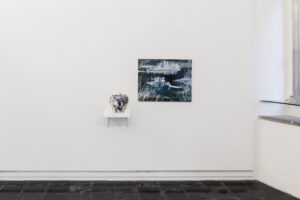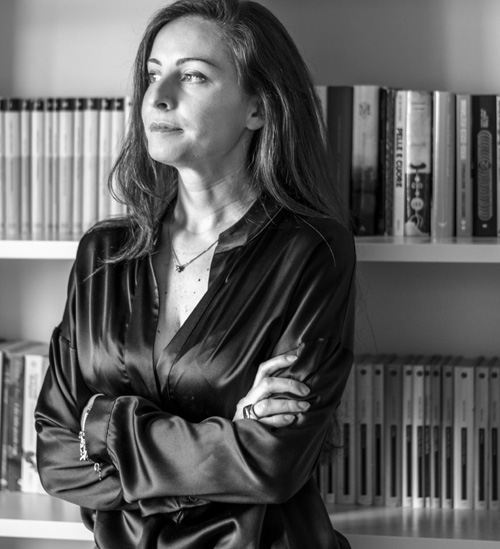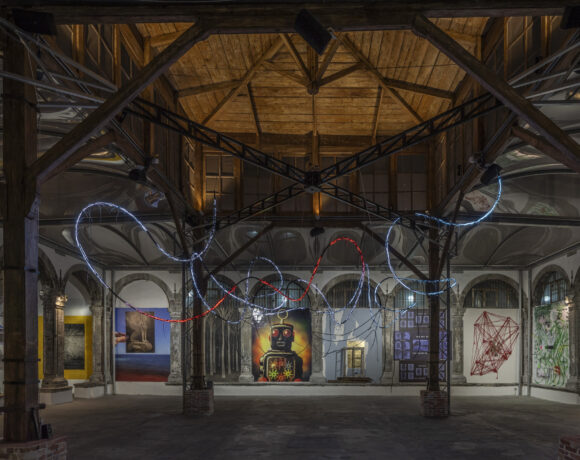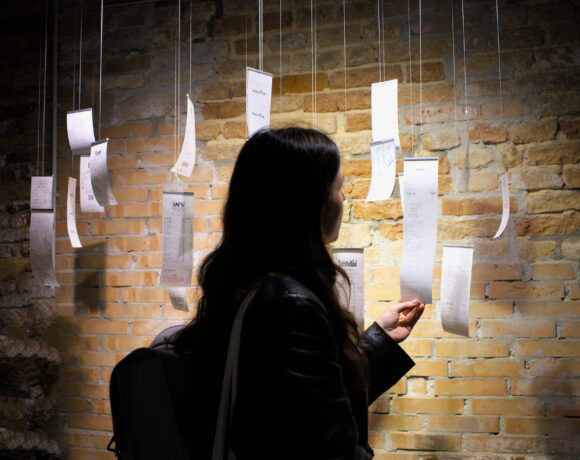It is a concerned assertion, generated from a lacerating vision, that of Charles Baudelaire, according to which individuality and the fragmentation of human will have led to weakness, doubt, and poverty of invention, so that the painter of today has killed painting[1]. Such is that it seems a state of claim, so that from such sublime unease, consequently, a mild astonishment develops, stirring up, with constant delight, the current pictorial inventiveness. Nevertheless, it is oppositions and not contradictions that derive from this reflection, for the uncertainty and wavering of one’s own certainties enclose a state of wonder useful for the advancement of artistic research. And thus, certainly, in the most positive sense, it is the painter who experiences the present who has doubted and not killed painting with their uncertainties and naiveties, generating works characterized by a strong sensibility and enigmatic nature, precisely because what is more human and complex than painting itself?

Summer Show: Giulia Maria Belli, Greta Ferretti, Narcisa Monni, Ph. Credit Carlo Romano, courtesy Galleria Eugenia Delfini, Rome
One cannot be surprised that, therefore, inventiveness functions like a hermetic box endowed with its own life, akin to a coessential fact, to open new visions not towards absolute beauty but evoking ideas intended to cause concern. With Giulia Maria Belli, Greta Ferretti, and Narcisa Monni, whom Galleria Eugenia Delfini presents in an exhibition from July 4th to September 15th 2023, the intention is to reflect precisely on this issue, as all the artists, while using the traditional pictorial instrument, change their style, continuously updating their operational methodologies. In fact, each work is all the greater in its ability to change the view of the others that have preceded it, thus challenging Baudelaire’s thought, as individual achievements compensate for the creative disorder teeming with gray mediocrity.

Summer Show, Narcisa Monni, Ph. Credit Carlo Romano, courtesy Galleria Eugenia Delfini, Rome
With Narcisa Monni (1981, Alghero), who exhibits an important selection of artworks on paper, the focus is on the extremely imperfect identity of humans, of which nothing is more personal and intimate. The artist gives visual substance to the inner voice, sometimes unheard, through a dismantling of one’s certainties from a sentimental education that is composed and subtly intellectual. This transformation occurs with an interesting faculty of analysis expressed through the fullness of sinuous, frayed, and soft painterly material that highlights the plasticity of bodies. Thus, the portrayed figures are deliberately and discreetly unnatural, with details of a “clown-like” nature, with stage makeup that thickens particularly around angular forms and in view of certain bodily spaces, like nipples and cheeks. Even the surrounding environment, as a reflection of the soul, ends up devoid of naturalism, so the colors condense as in circular eyelets defining a casing without which the character would feel like a snail without its shell. With Monni, one is approached by the idea that the painter has doubted painting, not so much for the apparent lack of inventiveness, which is indeed prolific here, but because the artist follows human frailty with humility and a certain sanctity, evoking its verisimilitude and never real adherence. For its part, Delfini’s choice to exhibit these artworks implies the audacity of posing light-as-wind questions to the viewer, that is, the desire to interpret physical presence with a language balanced between contingency and essentiality.

Summer Show, Giulia Maria Belli, Ph. Credit Carlo Romano, courtesy Galleria Eugenia Delfini, Rome
Conversely, with Giulia Maria Belli (1989, Udine), painting reveals itself in its boundless freedom of fantastic stories that spring forth from it. So much so that the aquatic creatures she conceives and names “anguane” come to life, at times partially immersed in a basin of water, at times dancing gracefully among natural elements on the surface of sculptural vases. Moreover, the choice of arrangement, transcending the realm of mimetic exercise, seems to seek to provoke scandal, as it is precisely in the transgression of rules that the most innovative and simultaneously attractive art is practiced. Indeed, Belli never paints in a unidirectional manner, demonstrating instead a coherence in the elaboration of both sculptural and painterly works. This is a debatable creative choice that gives rise to intriguing, if not unique, evocative images of metaphysical questions, presenting themselves as gentle forms in their bucolic world. And thus, the artist succumbs to a thousand stimuli, caught between pragmatism and impulse, towards a dreamt dimension that unveils a narrative parallel to our created reality. In this context, the artworks are occasionally chilly and not vivid, yet always imbued with a faint breath of life, while nature is immersed in a cold light, as if a veil of dust envelops them, causing us to lose our gaze in opaque vistas.

Summer Show, Greta Ferretti, Ph. Credit Carlo Romano, courtesy Galleria Eugenia Delfini, Rome
Contrarily, with Greta Ferretti (1996, Rome), creations becomes a technical matter, showcasing scenes of a radiant contemporary femininity, as each paper unfolds under a light cast in red tones that informs and shapes reality. The works are likely coded for their terminal character, positioning themselves as the edges of a research cycle that began with confident elaboration, imagination, and truth, only to culminate in a vision where everything merges into an intense source of light. Thus, for the artist, storytelling is akin to the work of creating an image, that is, isolating the world to discern its most significant moments. All of this happens through a well-calibrated blend of ink-based coloration, wherein each paper appears connected to the next through a quote and a dissolved figurativeness, intentionally reduced to its limits and sculpted in vermilion shadow. And so, one can speak of pure naturalism, where the details appear extremely fresh and dazzling, intersected by a radiance reminiscent of prismatic crystal. To conclude, it is important to remember, in contrast to other convictions, that painting, in any expressive form, remains, and hopefully will remain, a manifestation as free as it is alive. This is because artists’ brushes encapsulate unique passions, virtuosity, and the genuine smiles of life within themselves.
Maria Vittoria Pinotti
[1] Charles Baudelaire, Il Salon del 1846, curated by Adolfo Tura, Johan and Levi Editore, 2022, p. 122
Info:
Giulia Maria Belli, Greta Ferretti, Narcisa Monni, Summer Show
4/07/2023 – 15/09/2023
Eugenia Delfini Gallery
Via Giulia 96, Rome

Maria Vittoria Pinotti (1986, San Benedetto del Tronto) is an art historian, author, and independent critic. She currently is the coordinator of Claudio Abate’s photographic archive and Manager at Elena Bellantoni’s Studio. From 2016 to 2023 she was the Gallery Manager in a gallery in the historic center of Rome. She has worked with ministerial offices such as the General Secretariat of the Ministry of Culture and the Central State Archive. Currently, she collaborates with cultural sector magazines, focusing on in-depth thematic studies dedicated to modern and contemporary art.






NO COMMENT